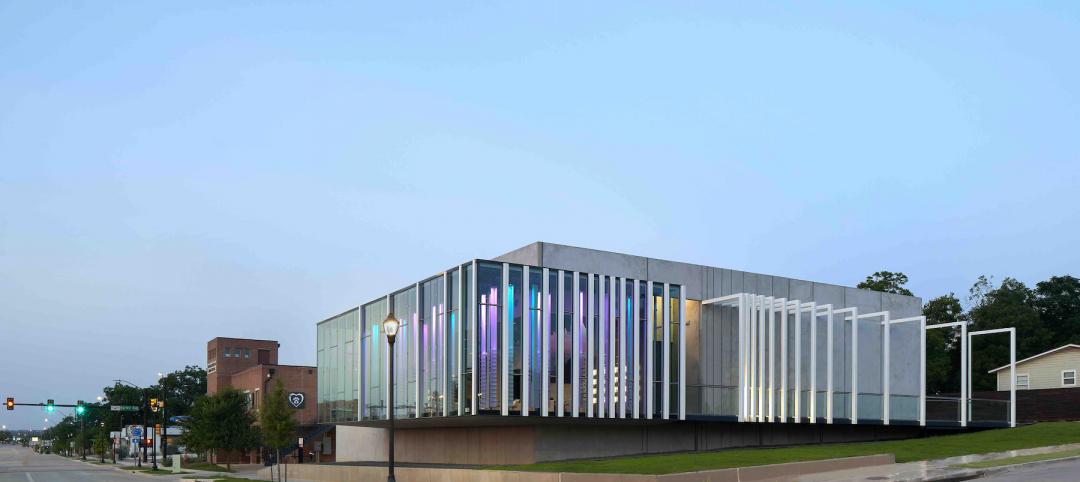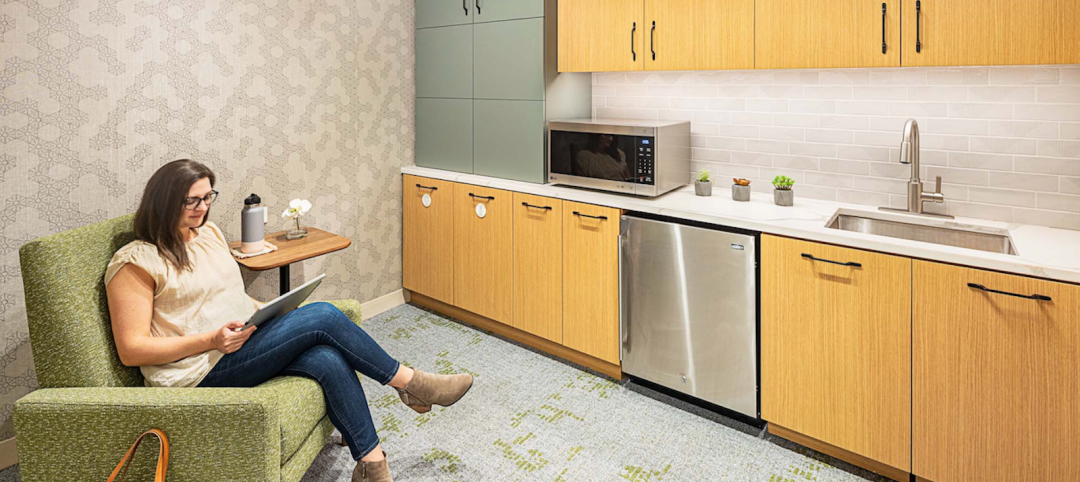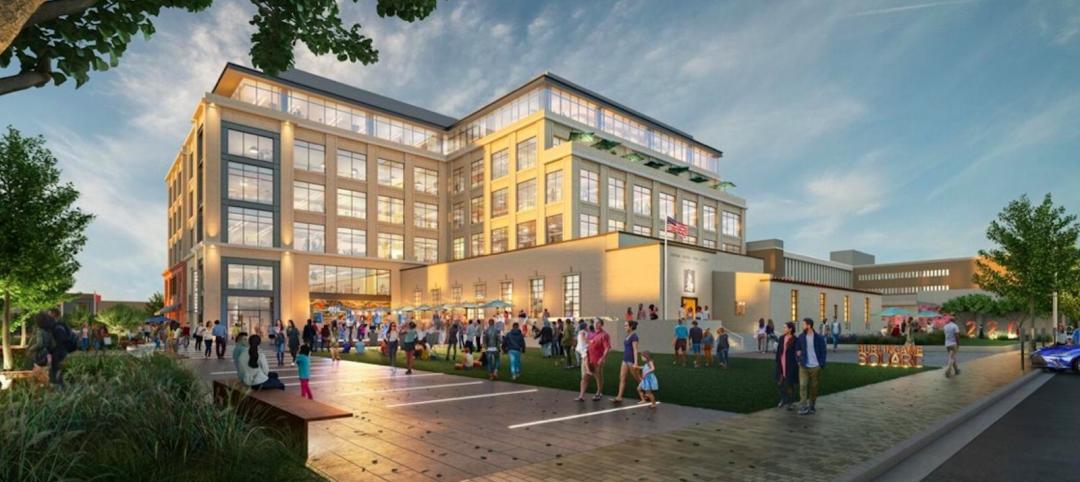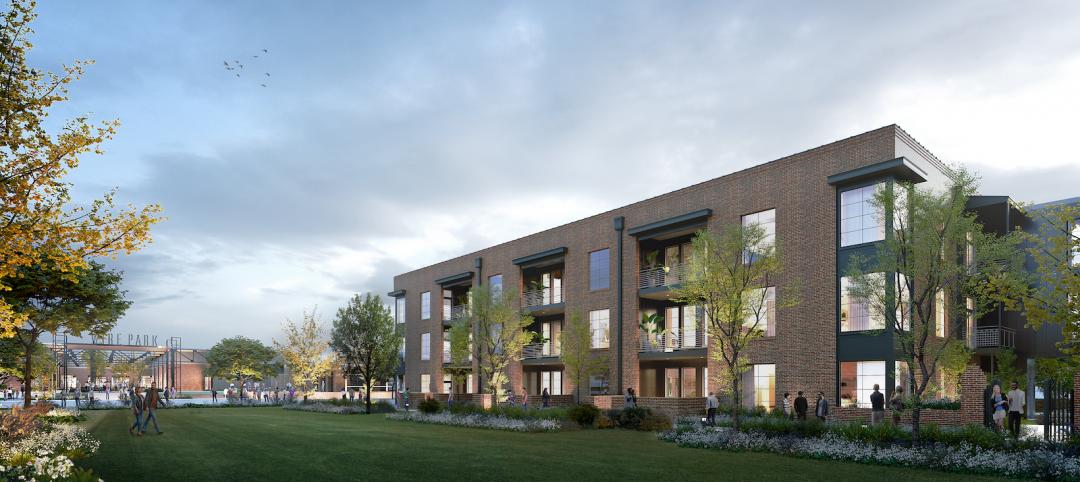What can companies be doing better to ensure that their workplaces provide the healthiest and most efficient environments for multigenerational employees who might have widely differing attitudes and approaches toward technology and collaboration?
That’s the primary question that Jodi Williams, senior workplace specialist for the architectural firm RTKL, poses in a white paper titled “2015 Trends in the Workplace.”
“Too often, clear and compelling business strategies fail to translate into the real environment,” Williams writes. “It’s partly about recruitment and retention—providing inviting, comfortable work environments that reinforce values and make employees feel like a part of a larger mission.”
Drawing from a range of source material, Williams identifies five trends that could improve employees’ job satisfaction and productivity, and a company’s profitability.
1. Wellbeing, not just Wellness
The average American sits 7.7 hours per day. Being sedentary for that long over a prolonged period of time has negative impacts on a person’s weight gain, which in turn makes a person more vulnerable to heart disease, brain function issues, leg disorders, and even more serious health problems.
While they are working, employees usually don’t get much exposure to natural light or the outdoors, either, even as studies show that access to both can make an employee more productive and less prone to absenteeism.
“Focusing on wellness is not enough,” claims Williams. The workplace itself needs to promote physical health as well as mental and social wellbeing that includes opportunities to engage in spontaneous encounters, freedom to move between social phases, opportunities for regular exercise, noise levels similar to those in nature, and meaningful change and sensory variability.
Designing a psychologically healthy workplace includes providing places of refuge. There should be a focus on culture and emphasis on professional and social interaction. The workplace should also offer views of the outdoors, and “regenerative” spaces indoors with views of plants, nature, fish, or fire.
Williams suggests that companies interested in workplace wellbeing would benefit from exploring Delos Building Wellness’ WELL Building Standard—a first-of-its-kind protocol for establishing human wellness within the built environment.
2. Staunching the Baby Boomer Retirement Tsunami
Workplaces are more diverse than ever, with as many as five generations working together in some companies. While that mixture is generally good news for companies, it can also create organizational and management friction, to say nothing of the disruption being caused by 10,000 Americans turning 65 years old every day.
Older Americans are choosing to postpone retirement, or at the very least work part time. And a growing number of companies, in an effort to persuade older workers to stay on longer, are extending their mandatory retirement ages, some to age 75. But companies must also face the reality that older workers are going to step aside at some point. So what are these companies doing to retain and cultivate their best younger talent?
“The workplace environment does matter when employees select a position,” Williams says. Companies need to consider what type of talent they are trying to attract and what types of spaces will help draw these people in and keep them in the organization.
Williams notes that companies are now making human resource decisions that accommodate multiple generations. That means addressing such issues as workplace ergonomics, technology, mentoring and knowledge transference, and how different generations prefer to collaborate.
She says that younger generations prefer workplaces that support knowledge. It is also important for companies to create flexibility for a varying workforce that might include more part-time workers and consultants. “We expect to see more hoteling type scenarios,” Williams predicts.
3. Having Enough Space to Collaborate
Collaboration, writes Williams, “continues to be a key emphasis for workplace design.” But companies need to decide what kind of collaboration works best for them and their employees. Architects and designers, therefore, must gain a better understanding of their clients’ organizational structures, particularly the role that meetings play in their business functions, to design offices with sufficient and large-enough meeting spaces as not to impede the collaborative and creative processes.
4. Connecting through Technology
At a time when more people work from home or remotely from a company’s offices, technology enables collaboration. But mobility isn’t always as simple as it looks. Williams notes that many companies still struggle with providing pervasive Wi-Fi; with digital security; and with providing tools that support in-person or online collaboration.
“Mobility is about more than just BYOD [bring your own device],” writes Williams. And real technology flexibility is going to impact an office’s design, furniture, software, and device selection, as well as workflow and remote accessibility.
5. Working Everywhere and Nowhere
Worker mobility is causing companies to rethink what kind of real estate they require, and whether long-term investments in leases or ownership are cost effective anymore.
Williams identifies options that companies now have at their disposal, such as “serviced offices” with short-term leases for smaller work groups; “speculative suites” within existing offices that can be up to 10,000 sf; and subleases of ready-to-use offices within buildings.
Williams points to “coworking” facilities that offer a variety of workspaces and basic supplies, designed to attract a mix of individuals for specific periods of time. These kinds of office situations are set up, she says, to create “synergistic” communities that bring together people from various backgrounds.
There’s also “Liquid Space,” an online company that enables its members to locate and book workplaces when they need them. (On its website, Liquid Space offers options for small and large meeting rooms, training rooms, price offices, open desks, coworking spaces, “touchdown” spaces, team spaces, and hotel meeting spaces. All of which are leasable by the hour or day.)
Related Stories
Projects | Mar 10, 2022
Optometrist office takes new approach to ‘doc-in-a-box’ design
In recent decades, franchises have taken over the optometry services and optical sales market. This trend has spawned a commodity-type approach to design of office and retail sales space.
Mass Timber | Mar 8, 2022
Heavy timber office and boutique residential building breaks ground in Austin
T3 Eastside, a heavy timber office and boutique residential building, recently broke ground in Austin, Texas.
Performing Arts Centers | Mar 8, 2022
Cincinnati Ballet’s new center embodies the idea that dance is for everyone
Cincinnati Ballet had become a victim of its own success, according to company president and CEO Scott Altman. “We were bursting at the seams in our old building. We had simply outgrown the facility,” Altman told the Cincinnati Enquirer.
Projects | Mar 7, 2022
An Atlanta office promotes employee well-being
For its new Atlanta office, New Relic, a California-based technology company that develops cloud-based software, wanted to keep employee health and wellness at the fore. It also wanted the workspace design to bolster productivity as well as employee engagement and retention.
Projects | Mar 3, 2022
Move, lift, restore: Repurposing a former post office near San Francisco
In mid-February, a construction crew began lifting a 1940s post office building located in Burlingame, Calif., on the San Francisco Peninsula.
Projects | Mar 2, 2022
Manufacturing plant gets second life as a mixed-use development
Wire Park, a mixed-use development being built near Athens, Ga., will feature 130 residential units plus 225,000 square feet of commercial, office, and retail space. About an hour east of downtown Atlanta, the 66-acre development also will boast expansive public greenspace.
Office Buildings | Feb 23, 2022
The Beam on Farmer, Arizona’s first mass timber, multi-story office building tops out
The Beam on Farmer, Arizona’s first mass timber, multi-story office building, topped out on Feb. 10, 2022.
Resiliency | Feb 15, 2022
Design strategies for resilient buildings
LEO A DALY's National Director of Engineering Kim Cowman takes a building-level look at resilient design.
Office Buildings | Feb 1, 2022
Mennica Legacy Tower: GP's latest office complex in Warsaw is uniquely designed
Mennica Legacy Tower marks GP’s first completed project in Poland. The Mennica Legacy Tower was developed by an affiliate of Golub & Company LLC and Mennica Towers GGH MT Sp z o o S.K.A, and delivered in collaboration with Epstein, a design firm with offices in Chicago and Warsaw.
Laboratories | Jan 28, 2022
3 must-know strategies for developers in today’s life sciences industry
While the life sciences industry had been steadily growing, this growth exploded when the pandemic arrived—and there is no indication that this lightning-fast pace will slow down any time soon.

















